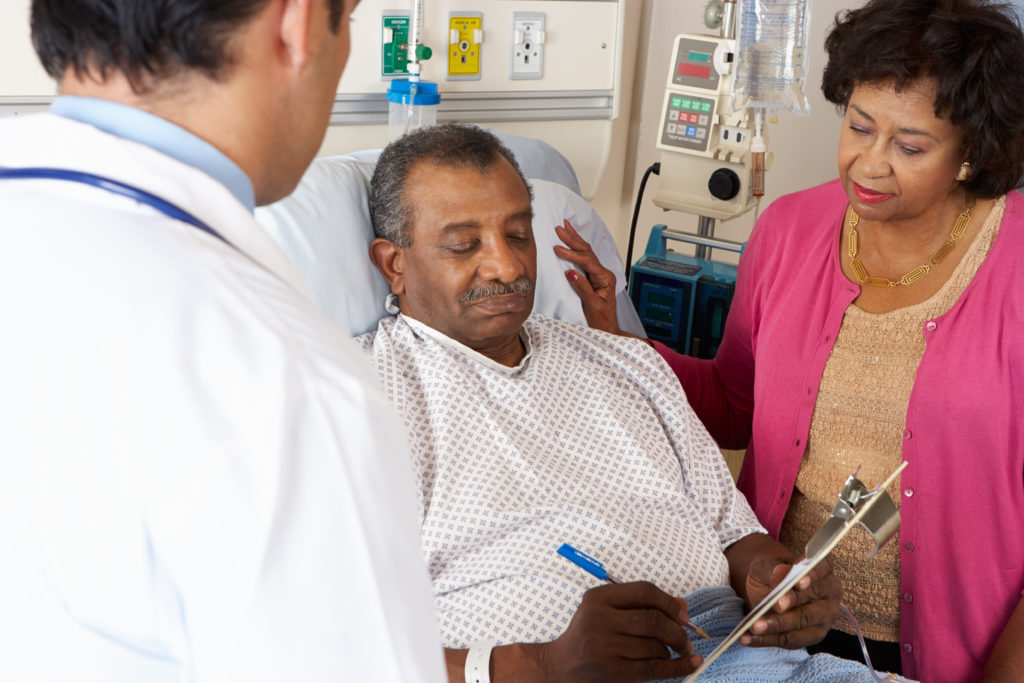Clinical Corner
By Mark Krich, MD
So you’re a physician new to the emergency room. Want some advice? There are really only two things you need to do to thrive in the ER wilderness:
- Be nice to everyone.
- Document EVERYTHING.
Sounds simple, right? Let me explain.
Technically a physician is anyone who passes medical school (and the licensing exams). The problem is that the newly graduating physician knows practically nothing about practicing medicine! Luckily, we all have at least three additional years of training to fix this flaw in our medical training – residency.
Staff Relationships
On my first day of residency, as the new interns and I were being shown around, we were given a piece of advice that continues to save me to this day: “See those nurses? Each one of them knows more about emergency medicine than all of you put together. Treat them well. They will save your a**!”
Nurses spend way more time face to face with patients than we do. They will notice much faster than we will if a patient is turning for the worse. Odds are they will know what test you need to order, what medicine you need to give, or who you need to call before you ever give an ‘order.’ While I like to think I have learned a bit more in the 25 years since I started residency, the point is your nurses are an incredibly valuable asset. Treat them with kindness and respect, and they will be your best ally in the emergency room wilderness.
A good relationship with the hospitalist (pediatrician, surgeon, and OB too) is vital, especially in today’s COVID world. It is really difficult getting people transferred out! There are so many times when a good relationship with the hospitalist is useful. The patient who has an alcohol level of 500, and you just need someone to babysit for the day. The old lady who was dumped off by family because they can’t take care of her anymore (now that it’s Friday night). The two-year-old who has decent vitals, but just doesn’t look ‘right’ and you don’t want to send him home.
The list goes on and on. If your hospitalist likes you, and feels they can trust you, you will have an infinitely easier time admitting these patients. Is it possible to get these patients admitted otherwise? Or course, but expect a fight each and every time you try to admit someone in a situation that isn’t completely straightforward in the future.
The same holds true for others working in the department. The radiology techs, the MSA’s, the security officers, housekeeping, lab techs, and others – they will all work harder for someone they like. It is even important to develop a good working relationship with the people at the transfer centers. It’s the same as with the hospitalists: could you sell them a crap sandwich? Sure! Will they remember it the next time you call them? Absolutely! Do you think they don’t know which providers they can trust when you say, ‘this one is really sick?’ Be nice and they will go the extra mile for you.
Patient Relationships
You want your patients to like you. First of all, it makes an emergency room encounter so much nicer. None of us likes getting yelled at or fighting with patients all night. It is infinitely easier to convince a patient to do the right thing medically if they like and trust you.
They are also much less likely to file a complaint or sue you if they like you. Statistically speaking, Emergency Medicine remains in the top 10 specialties for lawsuits. The IHS investigates each and every complaint made. Patients are interviewed. Witnesses to the complaint are interviewed. Everything is put in writing and everything ends up in your record. A committee of administrators, nurses, and providers then meets to discuss ‘action items’ that must be taken as a result of the complaint. Even if you did everything perfectly, the complaint is added to your record. Nobody wants a bunch of complaints, valid or otherwise, in their file when they come up for reappointment every 2 years.
The same holds true for friends and family of the patient. You never know if one of them will file a complaint. You also never know who in the hospital they know, are friends with, or are related to. I want the family to help me convince the patient to do the right thing. You can never have too many friends.

Documentation
What do you do when someone else isn’t being nice?
Nothing.
This one can be very hard. Especially in the heat of the moment. We are professionals, but we are also people. We have bad days. We get upset. We get angry. We get frustrated.
Do not fight with others in the wilderness. Nothing good ever comes of it. Even if you are in the right. Even if the other person is completely unreasonable.
This is where we transition to #2. Document everything.
If it’s a patient, document the behavior, and have them sign out AMA if needed. Get your nurses to back you up. If needed, get one of your colleagues to help. Stay calm, do your job, and document what happened.
If it’s a colleague, things can get even more tricky. Do not fight. Do not yell at others. Be professional. Write an incident report if needed. Call your medical director. Call the administrator on call. Keep your charts professional. Document only the relevant issues in the chart.
Documentation is critical in the wilderness.
QAPI
Administration meets every weekday for quality review of the ER (QAPI). The vast majority of the quality that is discussed is the quality of your documentation. Did you fill out the correct forms? Did you fill them out correctly? Did you document all the appropriate elements of those forms?
As an example, the first thing that is reviewed every day in QAPI is behavioral health. The conversation for each chart goes something like this:
- Was the ESI level documented appropriately?
- Is there documentation that the patient was handed off to the provider?
- What is the documented MSE time?
- Is there a suicide tab documented?
- Is there a sitter documented?
- Is there a consult to behavioral health documented?
- Is there a conversation between behavioral health and the ED provider documented?
- Did the ED provider document agreement with the behavioral health assessment?
- Is there a behavioral hold form documented?
- Is there a PRC documented?
This is not to say that QAPI does not look at quality of care. This is to say that QAPI first and foremost looks at quality of documentation.

Creating Emergency Room Documentation
Now – please note that the word is quality and not quantity. Dragging in all of the ‘garbage’ information that the electronic health record produces does not make your emergency room documentation better. Nobody looks at any of that stuff. Administration is looking for very specific elements in your charts. Make sure to include them!
Here are two documentation errors that come up over and over again:
- Dragon errors: Dragon is not perfect and will change what you say into something completely unrecognizable. Please review your transcription and make sure what the emergency room chart says is what you meant it to say. This is, after all, a legal document.
- Templates: They are very useful for saving time, but really bad if they do not fit the current chart. One that we see often is a chief complaint of suicidal ideation with a review of systems that says, ‘no suicidal ideation.’ Please be mindful of your preprogrammed templates and adjust them as needed for your current patient.
As an emergency room medical director, I really just need you to tell me the story. Why is the patient here? What happened to try and fix the issue? What did you do with the information that you obtained? Finally, what was the outcome? I don’t want to read a novel. Give me the ‘Patient X for Dummies’ version.
Example: Patient came into ER for shortness of breath. I noticed he had a fever of 102 F and was tachycardic in the 120s. His COVID test was negative, but his chest x-ray showed a left lower lobe pneumonia. His WBC was 18. He dropped his sats to 88% on room air, so we started NC O2. Blood cultures were obtained and Rocephin and Azithromycin given for community acquired pneumonia. I called the hospitalist, and the patient was admitted in stable condition.
Be very careful with abnormals. If the patient has abnormal vital signs, explain why, what you are doing about it, and document improvement or what you are continuing to do about it. If you have abnormal labs or radiology tests, same thing goes. Explain the abnormal, what it means to your patient, and what you are doing about it. Administration pays particular attention to ‘critical labs’, and even has a special section of the chart dedicated to your discussion of how you took care of these! If you are sending a patient home from the emergency room with abnormal vitals or abnormal testing, be sure to document why.
Fill out all the required forms. Fill out all the required elements of the required forms. Accurately document the course of the emergency room encounter and explain why you did what you did. Make sure your templates and your Dragon speech do not sabotage your beautifully crafted short story for dummies.
As ferocious as the ER wilderness can be, I hope you can now see how easy it is to survive your journey if you just follow my two rules:
- Be nice to everyone.
- Document everything.


One Response
Thank you for recognizing “The Nurses” as an asset to a team trying to navigate our current Healthcare System.
I have not seen this much clarity on interactions that are so vital to getting through troubled waters